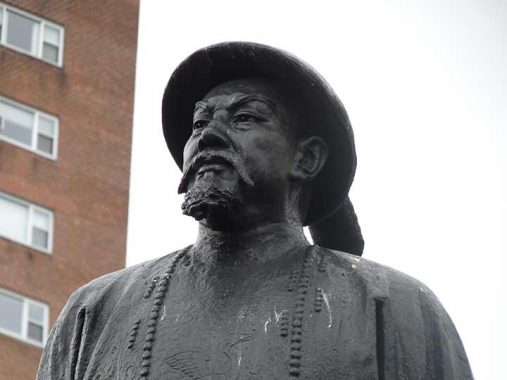
On December 31, 1838 Lin Ze Xu (1785-1850 ) was appointed by the Chinese emperor as Imperial Commissioner with the mission to eradicate opium in China. The sale of opium by the East India Company had jumped from 40,000 pounds in 1729 to three and one-half million pounds in 1832. In this position he proceeded to confiscate 2,600,000 pounds of opium and supervised its destruction during a 23-day campaign beginning on June 3, 1839 in Humen, China. This action served to ignite the Opium Wars with Britain. Three years later, China had lost the war and Lin Ze Xu lost his title. However, through his efforts he became a symbol of moral resistance to the invasion of drugs wherever their source. In 1839 he wrote a letter to Queen Victoria in an era when the British monarch had more power than today, if only by strong suggestion or persuasion, to see what she could do to curtail the opium trade. Unfortunately the note apparently did not reach her. Here is part of the letter:
We find that your country is sixty or seventy thousand li [three li equal one mile] from China. Yet there are barbarian ships that strive to come here for trade for the purpose of making a great profit. The wealth of China is used to profit the barbarians. That is to say, the great profit made by barbarians is all taken from the rightful share of China. By what right do they then in return use the poisonous drug to injure the Chinese people? Even though the barbarians may not necessarily intend to do us harm, yet in coveting profit to an extreme, they have no regard for injuring others. Let us ask, where is your conscience? I have heard that the smoking of opium is very strictly forbidden by your country; that is because the harm caused by opium is clearly understood. Since it is not permitted to do harm to your own country, then even less should you let it be passed on to the harm of other countries—how much less to China!

The statue of Lin Ze Xu can be found at Kimlau Square, where the Bowery, East Broadway and St. James Place meet just south of Chatham Square. At this point, the 2nd and 3rd Avenue Els diverged and headed uptown until 1942, when the 2nd Avenue was discontinued, with the 3rd Avenue following it in 1955. Kimlau Square was named for Chinese-American bomber pilot Benjamin Ralph Kimlau, who was shot down over New Guinea by the Japanese in 1944 during WWII.
As always, “comment…as you see fit.” I earn a small payment when you click on any ad on the site.
3/7/22


3 comments
The square’s war memorial was landmarked last year: http://s-media.nyc.gov/agencies/lpc/lp/2653.pdf
The original “War on Drugs.”
Interesting that Chatham Square is maybe 1.5 miles south of Astor Place, named after one of the earliest importers of opium into China (using the British ships).
https://www.history.com/news/john-jacob-astor-opium-fortune-millionaire